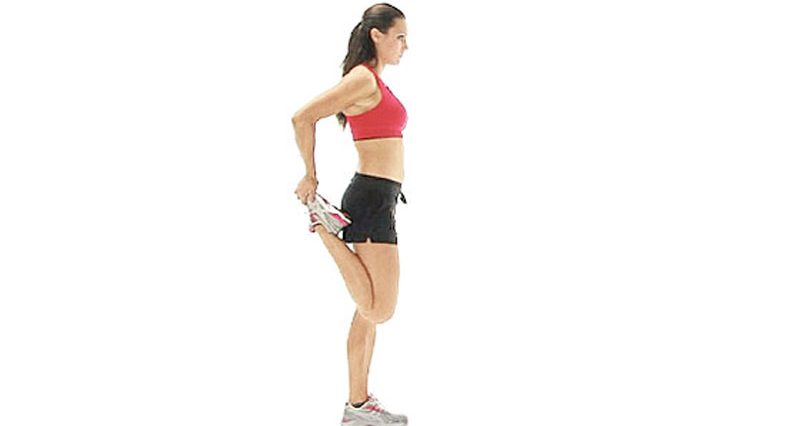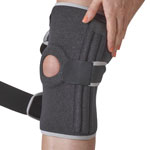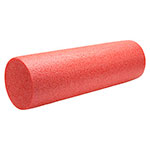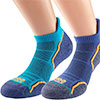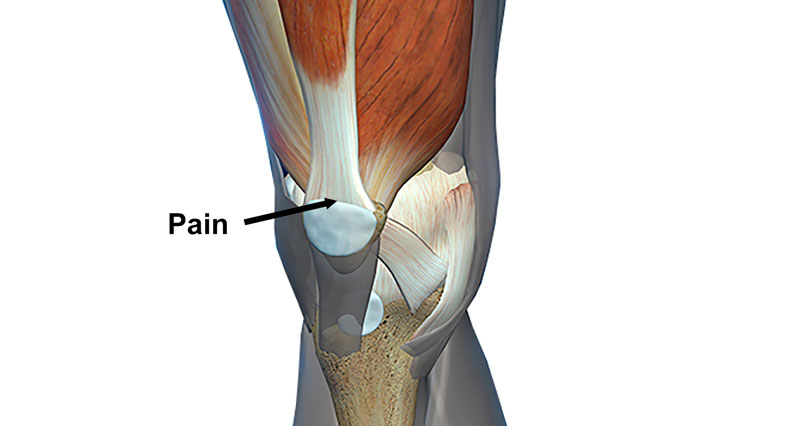Stretching exercises in particular are important for recovering from quadriceps tendinopathy. In addition, strengthening may also be beneficial, particularly eccentric strengthening. However, the emphasis, particularly in the early stages following injury is on rest and stretching.
Medically reviewed by Dr Chaminda Goonetilleke, 13th Dec. 2021
What are the quadriceps muscles?
The quadriceps muscles are four muscles at the front of the thigh. They converge to a tendon, inserting into the top of the patella (kneecap). The patella tendon connects the patella to the shin bone.
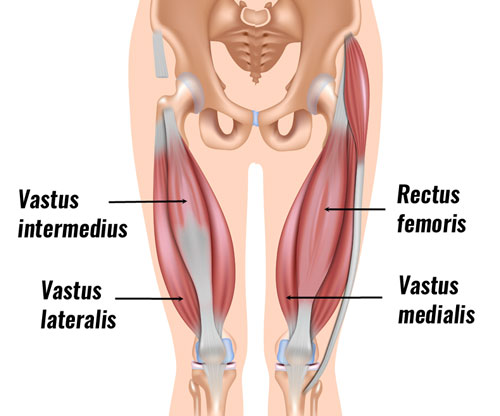
The vastus medilis, vastus intermedius and vastus lateralis originate high on the thigh bone. As a result, they cross one joint (the knee). The rectus femoris originates at the front of the hip on the pelvis, crossing both the hip and the knee. This means you need to do a slightly different stretches for the rectus femoris muscle, involving the hip as well as the knee.
Quadriceps tendinopathy stretching exercises
The muscles in particular that need to be stretched are the Quadriceps group at the front of the thigh.
Testing Flexibility
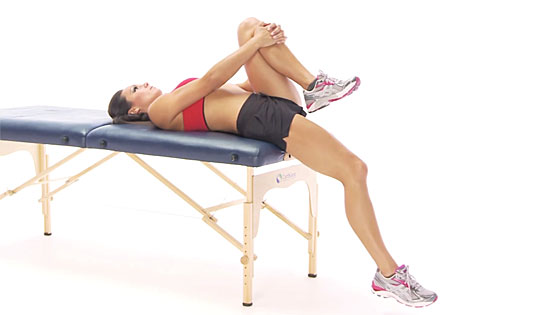
This can be tested by performing Thomas hip flexor test. Laying on the back, pull one knee up as high as it will go. The thigh of the free leg should be horizontal.
If it rides up, this indicates possible tight hip flexor muscles (Rectus femoris or Iliopsoas). The shin of the free leg should hang vertically. If not then this may indicate tight Quadriceps muscles.
Quad Stretch 1:
Hold the foot of the leg to be stretched and gently pull up behind. Aim to keep the knees together and pull the leg up straight not twisted. A stretch should be felt at the front of the leg. It should not be painful. In the early acute stages of treatment, hold stretches for around 10 seconds.
Later on, when the inflammation has gone stretches should be held for around 30 seconds. Repeat 3-5 times and stretch at least 3 times a day.
Quad Stretch 2:
Kneel on one knee with a very padded cushion for support. Pull the foot up behind as shown. This stretch will target the Rectus femoris more. If you have any pain on the knee when performing this stretch, avoid it.
This stretch places a lot of pressure on the kneecap when kneeling down so it is essential to have plenty of padding for support. Again hold for 10 seconds initially and progress to 30 seconds. repeat the stretch 3-5 times, at least 3 times a day.
Quadriceps tendonitis strengthening exercises
Strengthening exercises should begin as soon as pain will allow. If it hurts, don’t do it. Also if you find you have more pain in the morning after doing strengthening exercises then you may need to reduce the workload. Remember, this is an overuse injury. So overloading your knee too soon may be counterproductive.
Static contractions (isometric exercises)
These are simply performed by contacting the Quadriceps muscles at the front of the thigh and can be performed in standing, or in sitting with the knee straight or with a foam roller or rolled-up towel under the knee so that the foot lifts off the floor when you contract the quads.
An example program might be – contract for 10 seconds, relax for 3 seconds, and do 10 repetitions. Rest for a minute and repeat up to five times.
Although this exercise is boring it will maintain muscle bulk and ensure you are back to full fitness faster. Continue with this exercise on a daily basis until you are able to perform the eccentric exercises below.
Eccentric double-leg drop squats
Eccentric exercises are when the muscle contracts but also lengthens at the same time. This occurs to the quadriceps muscles during the downwards phase of a squat.
Eccentric strengthening exercises are thought to be beneficial in treating chronic tendon injuries including quadriceps tendinopathy. Perform a squat by moving slowly from a standing position to a squat position and back.
The exercises can be progressed by increasing the range of movement the knee goes through and also the speed at which the exercises are done. Eventually, they can be progressed to single-leg drop squats, using both legs on the up phase. Start with the bad leg and then do no more with the good leg than you managed with the bad leg. Again the aim is to produce mild pain in the tendon on the final set of repetitions. This is believed to stimulate the healing process.
Following exercises remember to stretch properly. Applying ice for 10 minutes can also help in reducing/preventing inflammation.
Return to Full Fitness
The length of time that is required to return to full fitness following Quadriceps tendonitis will depend on the severity of the injury and whether or not it is a recurrent injury or a first-time injury. For a first-time injury, recovery may take 2 to 3 months. A longer-term chronic, recurring injury may need 4 to 6 months.
Gradually return to sports-specific training.
Again depending on severity, this may be days, it may be weeks. Pain should be the guide. Begin with gentle jogging. When the athlete can jog for 20 minutes without pain during or after then progress to running and sprinting.
An example of a speed session might be 10x50m sprints at 50% effort. Next session performs 10x50m at 75% of full speed and so on. Continue to stretch and perform specific strengthening exercises throughout this phase of rehabilitation.
I am having trouble recovering from quadriceps tendinopathy
Rigorously stretch the muscles at least 3 times a day.
Cross-friction massage to the tendon at the site of pain can be applied on a daily basis. This has proved valuable in the recovery of even chronic cases.
Seek professional advice.
